The regional power structure of the Councils of Government, with anchor institutions that are outside of our elected representative government, are building a private network with access to both public and private data. These networks are linking through to a continental regional system, linking through to a global system of dark fiber, fiber optic sensors and data, and the end result is a dark system of totalitarian control – outside the boundaries of lawful government. The ultimate Panopticon.
The Councils are unelected commissions that are cross-jurisdictional, collectivist management organizations. They are comprised of at least one representative from each lawful jurisdiction after signing an intergovernmental agreement for the jurisdiction they were elected to represent. The Economic Development Administration (EDA) along with the Department of Transportation are the cancerous agencies leading the conversion to the system of regionalism. The regions overseen by the unelected COGs are economic regions collectivizing the lawful jurisdictions within the EDA’s economic district system.
The EDA was established in 1965 as one of the Great Society Programs of John W. Garner (Carnegie Foundation). Click the title below to read the mission statement of the EDA from the 2006 edition of the website:
- +Economic Development Administration Origins
MISSION
“To lead the federal economic development agenda by promoting innovation and competitiveness, preparing American regions for growth and success in the worldwide economy.”
The Economic Development Administration (EDA) was established under the Public Works and Economic Development Act of 1965 (42 U.S.C. § 3121), as amended, to generate jobs, help retain existing jobs, and stimulate industrial and commercial growth in economically distressed areas of the United States. EDA assistance is available to rural and urban areas of the Nation experiencing high unemployment, low income, or other severe economic distress.
In fulfilling its mission, EDA is guided by the basic principle that distressed communities must be empowered to develop and implement their own economic development and revitalization strategies. Based on these locally- and regionally-developed priorities, EDA works in partnership with state and local governments, regional economic development districts, public and private nonprofit organizations, and Indian tribes. EDA helps distressed communities address problems associated with long-term economic distress, as well as sudden and severe economic dislocations including recovering from the economic impacts of natural disasters, the closure of military installations and other Federal facilities, changing trade patterns, and the depletion of natural resources.
Source Link: https://web.archive.org/web/20060213171911/http://www.eda.gov/AboutEDA/Mission.xml
Brochure from the EDA website: https://www.eda.gov/pdf/about/EDA-trifold-2017.pdf
The information page about Region 9 says that their organization includes 9 members from the private sector:
Region 9 Economic Development District of SW Colorado, Inc. is a non-profit, 501(c)6 public/private partnership that promotes and coordinates economic development efforts throughout Southwest Colorado. Incorporated in 1989, Region 9 is led by a board of directors comprised of representatives from the 17 local governmental jurisdictions and 9 from the private sector.
The following is an excerpt from the history of the Southwest Colorado Council of Governments (SWCCOG):
The Region 9 Economic Development District of Southwest Colorado (Region 9) established a Regional Cooperation Committee (RCC) in 2008 and formalized the evolving conversation about forming a Council of Governments in Southwest Colorado. The Region 9 Board is made up from representatives of the 17 governmental jurisdictions, the majority who participated on this RCC group. In early 2009, several local government representatives decided to move ahead with the formation of the SWCCOG. Information was provided at a monthly county/city managers meeting, the RCC group and Region 9 Board meetings. There was recognition about the difficulty to develop long-range planning and topical issues across jurisdictional boundaries, but also recognition that there may be opportunities where it would beneficial to the local governments to do so.
The image of these central economic planning districts presents a completely different picture of the organization of the United States. The Councils of Government and Metropolitan Planning Organizations represent the collectivization of governments above the level and outside the level of elected, representative government. It would be a safe bet that the majority of people are completely unaware of the central economic planners sitting over the top of their local governments. The following is a US map of regional councils.
The National Association of Regional Councils (NARC – in name and fact) has a description of both Councils of Government and Metropolitan Planning Organizations on their website. It is an important page to read. Click HERE.
The membership of SWCCOG is comprised of an official designated by the lawful jurisdiction from the jurisdictions that are members. They attend regularly scheduled meetings of the SWCCOG syndicate. “Member jurisdictions must have signed an intergovernmental agreement to vote.
The SWCCOG member jurisdictions are as follows:
Archuleta County
Delores County
La Plata County
San Juan County
City of Cortez
City of Durango
Town of Bayfield
Town of Dolores
Town of Ignacio
Town of Mancos
Town of Pagosa Springs
Town of Rico
Town of Silverton
The Dark Web of the Regional Syndicates
Recently, I became aware of the strategic broadband plan of the SWCCOG – Southwest Colorado Councils of Government.
This plan brings up a lot of significant issues and some very troubling questions – not just for Colorado but for any location that has formally established a regional, governmental, cross-jurisdictional organization – a Councils of Government organization, regional economic central planners ![]() .
.
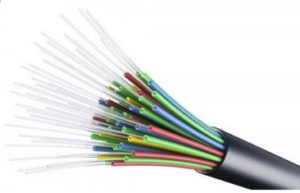 The strategic broadband plan is a marketing report for county and city officials within Economic Development Region 9 emphasizing cost savings through collaborative procurement of dark fiber leased lines. Dark fiber is unused capacity in an existing run of cable. To give you an idea of capacity in a cable, sometime around 1993, nearly 30 years ago, I attended a presentation about fiber optic cable. The presenter had a show-and-tell cable with him. He said each strand is about the size of human hair and had the capacity to handle 100,000 phone calls.
The strategic broadband plan is a marketing report for county and city officials within Economic Development Region 9 emphasizing cost savings through collaborative procurement of dark fiber leased lines. Dark fiber is unused capacity in an existing run of cable. To give you an idea of capacity in a cable, sometime around 1993, nearly 30 years ago, I attended a presentation about fiber optic cable. The presenter had a show-and-tell cable with him. He said each strand is about the size of human hair and had the capacity to handle 100,000 phone calls.
It’s not really the fiber optic cable itself that is expensive. What is expensive is the installation of it and then the on-going costs of the management of the network. In urban areas, there is enough demand to warrant the expense. In rural areas, there isn’t enough demand so costs are high which is the fundamental argument in the report for collective procurement.
The strategic broadband report was produced by a company called NEO Connect.
NEO is located in Colorado. In the Introduction, the report says that it was paid for partially by a grant from the Energy/Mineral Impact Assistance Fund. That’s very intriguing given that the west has a lot of minerals – like water, uranium, etc. What it means, is not known but it seems worth investigating.
The project was made possible by the Colorado Department of Local Affairs, Colorado Department of Transportation, La Plata Economic Development Alliance, Region 9 Economic Development District, and the Southwest Colorado Council of Governments. The scope of work also included making recommendations to put together a sustainable financial plan for the existing Southwest Colorado Access Network (SCAN) project. The following is a video about the SCAN project:
It all sounds very innocent doesn’t it? But is it really?
On page 8 of the report, it says the following:
With 116 anchor institutions currently connected to the SCAN network, the SWCCOG could implement a more favorable revenue model by providing services either directly or indirectly to the anchor institutions.
- +What Is An Anchor Institution?
- The short explanation is that an anchor institution is a place-based institution meaning one that can’t or won’t be exported to another country because it is integral to the “community” but several of the links in the search provide a little more information.
One of the search links was to the UK government Commission for Employment and Skills. The following is an excerpt from an article explaining the “labour market, jargon and the skills system” written by Professor David Smallbone of Kingston University: (emphasis added)
An anchor institution is one that, alongside its main function, plays a significant and recognised role in a locality by making a strategic contribution to the local economy.
Where did the concept first originate and why?
In the US in the 1960s the wellbeing of urban communities came under threat from deindustrialisation, globalisation and neo-liberal trade policies that placed the domestic manufacturing sector under pressure, according to the Anchor Institutions Task Force (AITF), a US think-tank.
The 1970s and 1980s brought worsening urban conditions to the US, with resources becoming increasingly scarce. By the 1990s, higher education institutions[1] could no longer ignore the conditions of the communities in which they were operating. As a result, explains the AITF, these institutions began to take responsibility for the successful development of their local communities, and created partnerships with other local organisations to address the complex socio-economic challenges faced by the local community.
. . .Anchor institutions are much more widely recognised in the US but the concept is becoming more popular in the UK too. In 2013 the Witty Review called for more British universities to pay more attention to the “third mission”, requiring universities to go beyond knowledge transfer and assume a responsibility for facilitating economic growth (Witty Review, 2013). The conclusions of the review reflects the broader localism trend in the UK, which involves giving local authorities more freedom and flexibility in decision-making.
What kinds of anchor institutions are there?
Anchor institutions come in all shapes and sizes. They can be universities, public libraries, hospitals, large corporate institutions with strong local links (ie, banks), performance arts facilities, religious institutions, utility companies, military bases, medical centres, museums, and sports teams.
[1] Evan Dobelle, President of Trinity College and former President of the City College of San Francisco gave a keynote speech in 1998 in which he talked about colleges as “community builders”. In previous research, Dobelle’s speech was captured in a video clip in an article titled City-State Conversion Planning. https://thetechnocratictyranny.com/corruption/city-state-conversion-planning/
- +Anchor Institutions Task Force
A search on the name Anchor Institutions Task Force brought up business called Marga, Inc. The company was founded in the year 2000 by David Maurrasse, a former advisor to the Rockefeller Foundation. Their answer to the question: What is an Anchor Institution? is the following:
The Anchor Institutions Task Force (AITF) is a growing network of over 700 leaders promoting the engagement of anchor institutions—including colleges, universities, hospitals, community foundations, libraries, arts institutions, and other anchors—in community and economic development. The AITF is designed to develop and disseminate knowledge and function as an advocacy and movement building organization to create and advance democratic, mutually beneficial anchor institution-community partnerships.
Core values of the Anchor Institutions Task Force include:
• Collaboration and Partnership
• Equity and Social Justice
• Democracy and Democratic Practice
• Commitment to Place and CommunityIn winter 2008-2009, a national task force was convened to advise the U.S. Department of Housing and Urban Development (HUD) on how HUD could increase its impact and strategically leverage anchor institutions, particularly higher education and medical institutions (“eds and meds”), to improve communities and help solve significant urban problems.
The anchor task force’s report, “Anchor Institutions as Partners in Building Successful Communities and Local Economies,” was published, by the Penn Institute for Urban Research, along with nine other reports in a volume titled Retooling HUD for a Catalytic Federal Government: A Report to Secretary Shaun Donovan (2009). Soon after the report’s publication, the ad hoc task force became a formal organization, the Anchor Institutions Task Force (AITF).
On the Penn State website for Graduate Education, a powerpoint pdf titled report Anchor Institutions and their Communities provided some pretty interesting reading.
Another interesting website that included a page on anchor institutions is the Community Wealth website:
Anchor institutions are nonprofit institutions that once established tend not to move location. Emerging trends related to globalization—such as the decline of manufacturing, the rise of the service sector, and a mounting government fiscal crisis—suggest the growing importance of anchor institutions to local economies. Indeed, in many places, these anchor institutions have surpassed traditional manufacturing corporations to become their region’s leading employers. If the economic power of these anchor institutions were more effectively harnessed, they could contribute greatly to community wealth building. The largest and most numerous of such nonprofit anchors are universities and non-profit hospitals (often called “eds and meds”).
These best practices can be extended and adopted to other types of nonprofit anchor institutions such as cultural institutions (e.g., museums and community arts centers), libraries, hospitals, community foundations and other locally-focused philanthropies, faith-based institutions (such as churches, mosques, and synagogues) and community colleges. . .
- +Chamber of Commerce - An Anchor Institution
On the Lake Erie College website, it said this:
Leaders from key organizations convened at kick-off meeting held recently at Lakeland. Major institutions represented included colleges and universities; school districts; regional hospitals; nonprofits; cultural institutions; social service agencies;?selected “anchor” corporations/alliances; chambers of commerce; and organizations that serve various populations.
“This is a community-based initiative – it’s bigger than any one of our institutions, “said Lakeland President Dr. Morris Beverage Jr.
About Anchor Institutions
Michael Porter, from The Harvard Business School coined the term “anchor institution” to highlight the current power and future potential of colleges and universities, hospitals and other nonprofit institutions with long-term, rooted investments in particular locations to transform neighborhoods, cities and regions.
[Go to my old website and type Michael Porter in the search box]
Economic Studies of the Region
Central economic planning for a communist system of economic management must begin with baseline information on the current economic status of a region. Michael Porter, Harvard University was the key “thought leader” in describing what came to be called Cluster Studies. A cluster study identifies businesses in a region and the relationships between businesses to identify the supply chain structures fo those businesses. The economic planners then use that information to increase the strength of a desired business or to put a business out of business by bringing in competitors using loss leader pricing. The Chamber of Commerce as an anchor institution with a membership of businesses is the facilitator of this aspect of central economic planning behind the rhetorical propaganda of competitiveness. The following are several reports concerning cluster studies and their use:
A Governor’s Guide to Cluster-Based Economic Development
Industry Cluster Analysis: Regional Economic Base: Analysis
In previous work titled, The Organization of Power (Part 3), it was found that the Chamber of Commerce has a subgroup of executive leaders (Association of Chamber of Commerce Executives) and within that subgroup, there is another subgroup called the Alliance for Regional Stewardship. The history of the Alliance can be read HERE. You can go to the current website for ACCE and type in the search box Regionalism or Alliance for Regional Stewardship and you will find more information on their regional activities.
The Competitive Advantage of Nations, Michael E. Porter, 1990
Social Studies of the Region
Obtaining the list of anchor institutions and soliciting their support in the conversion of the economic and social structure of a region to the communist management system is necessary for both obvious and not so obvious reasons. The collectivization of both for-profit and non-profit anchor institutions forms a syndicate – an institutional mafia that operates in the interest of the collective sometimes aligned with the electorate of a region – and sometimes not as in the case of refugee resettlement.
The anchor institutions are comprised of individuals who interests are aligned with the syndicate. When political issues arise as in the case of a piece of legislation in Idaho called S.1067, the institutional syndicate can call out their employees for a show of force against the non-syndicate individuals of the electorate. This is the means by which elected, representative government is subverted by the collective because the collective – the institutional mafia acts in the interest of the collective.
Social Control
Getting back to the Colorado Broadband Plan which you can assume is the same strategic plan for every regional Council of Government (COG), recall that their objective is to connect counties and cities in the COG region plus the anchor institutions together ostensibly to save money and to be more efficient in their regional operations. On page 21 of the Plan, it says the following:
In addition to Internet access services, the SCAN could support data services between locations
connected to the network. These data services provide a very high-speed connection between
two or more locations on the network, without going to the public Internet for Internet services.
So let’s recap. We have a virtually unknown regional syndicate establishing a private communications system outside of the public system with a direct point-to-point private network to which all of the anchor institutions and government entities within the region are connected.
On the same page, Page 21, it says the following:
Enhanced public safety options. Having a fiber connection between, for example, a
school and law enforcement can provide critical information during an emergency.
Security cameras can be installed with gunshot detection, allowing law enforcement
to receive instant camera and video feeds if a gunshot is fired within a school. First
responders can pinpoint who, where and how many shooters are present prior to
arriving at the scene.
That might sound like a good idea – but those security cameras can be turned on at any time for the police to surveil and record the activities of the students all the time. In fact, those security camera systems can be installed all over the town and inside syndicate facilities for 24/7 surveillance – the ultimate police state control system.
On the NEO website (recall that NEO is the consulting firm that produced the SWCCOG Broadband Plan), there is a page of links to reports. One of the labels is Environmental Benefits of FTTH Deployments. The report has the very intimidating title: Developing a Generic Approach for FTTH Solutions using Life Cycle Analysis Methodology to Determine Environmental Benefits of FTTH Deployments in the USA. Who wants to read that right? On page 6 of the report, under the heading of Goals and Applications, it includes the following:
The mission of the FTTH Council, North America is to educate stakeholders and to promote and accelerate FTTH solutions. One opportunity to accomplish this goal is to quantify the quality of life enhancements provided via FTTH deployments. The Council would like to develop a standard approach for evaluating FTTH solutions using globally accepted Life Cycle Assessment (LCA) methodology. The goal is to assess FTTH network implementation scenarios using the LCA methodology.
A search on the term FTTH Council brought up some very interesting results.
FTTH stands for Fiber to the Home and the Councils are continental and oceanographic regions.
And the FCGA – Fiber to the Home Council Global Alliance
The FTTH Council for the Americas was established in July of 2001 with the name FTTH Council. Apparently, the name was retired and the new name is Fiber Broadband Association. A new related organization was formed in 2017 presumably to put distance between the ideas of a global broadband network system with the ideas of sensors for surveillance and control. The name of the new association is: Fiber Optic Sensing Association. The following are significant excerpts:
Fiber optic sensing can be deployed to continuously monitor vehicle movement, human traffic, digging activity, seismic activity, temperatures, structural integrity, liquid and gas leaks, and many other conditions and activities along a fiber optic cable. Fiber optic sensing is used around the world to monitor smart infrastructure, such as railways, bridges, tunnels, borders, power stations and pipelines. It is also used in downhole oil and gas applications, to help characterize reservoirs and assist in well-optimization during production and completion. The technology is not constrained by line of sight or remote power access and, depending on system configuration, can be deployed in continuous lengths over hundreds of miles with detection at every point along its path. Cost per sensing point over great distances cannot be matched by competing technologies, such as point sensors, and often existing deployed fibers can be utilized.
. . . The Fiber Optic Sensing Association is affiliated with the not for profit Fiber Broadband Association, which provides education on the benefits of fiber optic networks and seeks to advance the deployment and utilization of fiber optic networks for multiple purposes, including sensing, telecommunications, Internet, and SCADA.
The next article on NEOs website brings all of the elements together in an article about Google and their Broadband Plan. Although the article doesn’t mention Toronto, Canada, it does mention that Google is looking for municipal partners which de facto leads to the Toronto municipal project of the smart city. The Toronto project is an idealized vision of the smart city designed to sell the idea of technology embedded within the infrastructure for convenience when what it really is – is the open air Panopticon, the ultimate system of control for people residing within the perimeters of the control grid all enabled by Broadband and sensors.


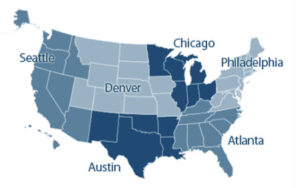
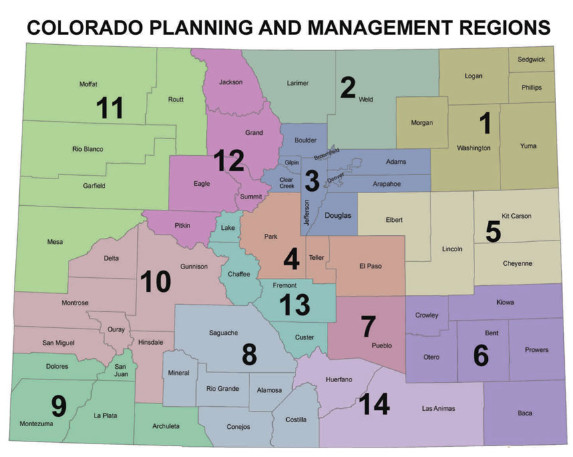
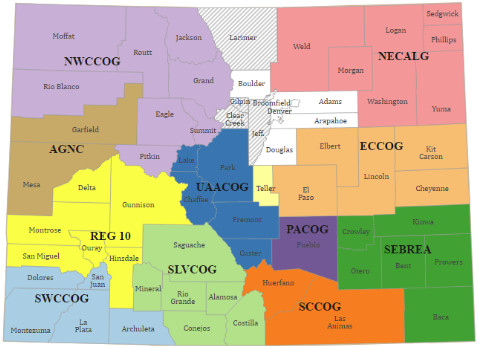
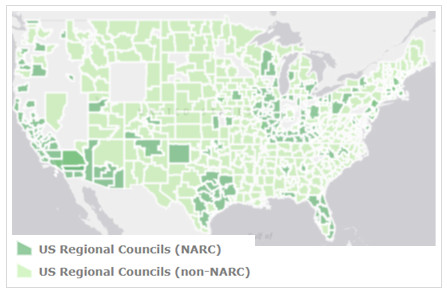
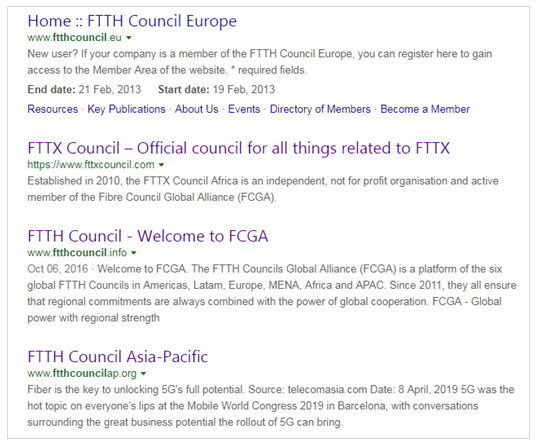
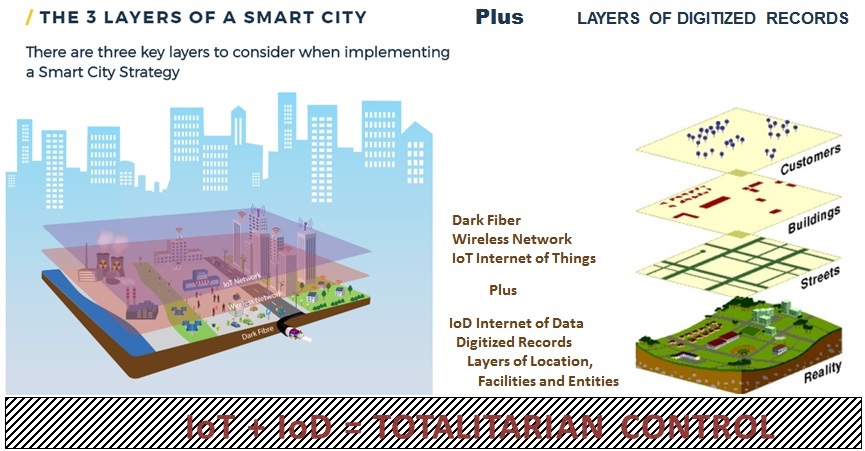






2 Comments
Pingback: The Red Fog of Communism in the Dark Web of the Deep State – Abel Danger
Kristin
Layers! All the layers- with everything we’ve done electronically, digitally, Twitter. Our phone calls, they will be watching it live, as we type, hearing what we are saying on the phone, as we say it. This was the whole thing behind FirstNet. It will all be connected- even the sanitation department, medical staff, hijabbed TSA screening agents will all have our data, interconnected with police, Homeland Security and so on- all in on this special network. You know Vicky I mentioned this maybe five years ago on a popular website for radio/HF/LF/VHF frequency monitoring & they laughed. Said oh something like that would never pass, no states would allow funding for it, let alone it sounded like science fiction. OK, now what of the people in rural locations? I think the fires in the rural areas, like in California, they make it very difficult for the same people who were burned out to rebuild in the same area. They do many different things to make it not worth the while, even if it is through denying funding options to rebuild there. If that doesn’t work then new “climate” or ecological laws in essence prevent re-population in same area. Single homes far off may be tougher to surveill, but to be honest if you’re on a smartphone it won’t matter where you are, or if you have any type of telephone or internet service.Whether you don’t mind being surveiled to such an extent someone else – no, many many other persons and groups know you’re every move, “thought” really as they can see what you are responding to negatively/positively on social networks, that may not concern some people, but it really isn’t about all that, it’s about what and how it will be utilized.
“FALSIFIED SCIENTIFIC RESEARCH
Somewhere in this connection, then, was the statement admitting that some scientific research data could be – and indeed has been – falsified in order to bring about desired results.” https://100777.com/nwo/barbarians#45 Taken from Dr Lawrence Dunegan’s tapes, a real doctor who passed in 2004, I think. At the time the tapes were transcripted and published, the only thing we knew about was “New World Order”. I guess we know it now by another name, and maybe another later- Communism,. or Leftism, or Democrat.